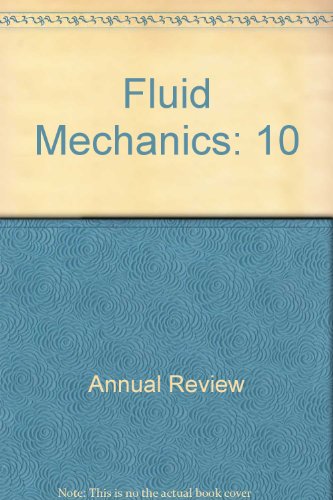Asymmetries in Nominally Symmetric Flows
IF 30.2
1区 工程技术
Q1 MECHANICS
引用次数: 0
Abstract
Many flows that are expected to be symmetric are actually observed to be asymmetric. The appearance of asymmetry in the face of no particular cause is a widespread although underappreciated occurrence. This rather puzzling and sometimes frustrating phenomenon can occur in wide-angle diffusers, over the forebody of axisymmetric bodies at high angles of attack, in the wake downstream of streamlined as well as bluff bodies, and in the flow over three-dimensional bumps and ramps. We review some notable examples and highlight the extreme sensitivity of many such flows to small disturbances in the body geometry or the incoming flow. Some flows appear to be permanently asymmetric, while others are bistable on timescales that are orders of magnitude longer than any convective timescale. Convective or global instabilities can occur, bistability is common, and mode interactions become important when multiple similar but distinct timescales and length scales are present. Our understanding of these phenomena is still very limited, and further research is urgently required; asymmetries in otherwise symmetric flows can have serious real-world consequences on vehicle control and performance.名义对称流量中的不对称现象
许多预期对称的水流实际上被观察到是不对称的。在没有特别原因的情况下出现不对称现象是一种普遍现象,但却未得到足够重视。这种相当令人费解、有时甚至令人沮丧的现象可能出现在广角扩散器中、高攻角轴对称体的前体上方、流线型体和崖壁体的下游尾流中,以及三维凸起和斜坡上的流动中。我们回顾了一些著名的例子,并强调了许多此类流动对机体几何形状或流入气流的微小扰动的极端敏感性。有些流动似乎是永久不对称的,而另一些流动在时间尺度上是双稳态的,其时间尺度比任何对流时间尺度都要长几个数量级。对流不稳定性或全局不稳定性可能会发生,双稳态也很常见,当存在多个相似但不同的时间尺度和长度尺度时,模式相互作用变得非常重要。我们对这些现象的了解仍然非常有限,迫切需要进一步的研究;在原本对称的流动中出现不对称现象,会对车辆控制和性能产生严重的实际影响。
本文章由计算机程序翻译,如有差异,请以英文原文为准。
求助全文
约1分钟内获得全文
求助全文
来源期刊
CiteScore
54.00
自引率
0.40%
发文量
43
期刊介绍:
The Annual Review of Fluid Mechanics is a longstanding publication dating back to 1969 that explores noteworthy advancements in the field of fluid mechanics. Its comprehensive coverage includes various topics such as the historical and foundational aspects of fluid mechanics, non-newtonian fluids and rheology, both incompressible and compressible fluids, plasma flow, flow stability, multi-phase flows, heat and species transport, fluid flow control, combustion, turbulence, shock waves, and explosions.
Recently, an important development has occurred for this journal. It has transitioned from a gated access model to an open access platform through Annual Reviews' innovative Subscribe to Open program. Consequently, all articles published in the current volume are now freely accessible to the public under a Creative Commons Attribution (CC BY) license.
This new approach not only ensures broader dissemination of research in fluid mechanics but also fosters a more inclusive and collaborative scientific community.

 求助内容:
求助内容: 应助结果提醒方式:
应助结果提醒方式:


